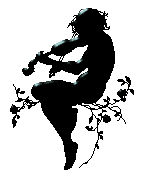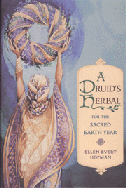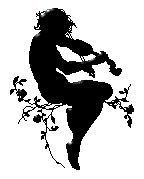 Book Reviews
Book ReviewsBook 5
 Book Reviews
Book Reviews


In my more cynical moments I sometimes consider - probably wrongly - that the celebration of Celtic culture and identity is more fashionably presented and practised on the N. American continent, rather than in Europe. Or looking through the Internet at the staged Celtic fairs, events and music proffered there, this is how it sometimes appears.
I
can definitely say however, that my copy of this book, published in Rochester,
Vermont was at least purchased in the bookshop in the Well Gardens at the bottom
of Glastonbury Tor! I should also
say that for some twenty of thirty years I have avidly read every book about
ancient Celtic matters I could lay my hands on, and made many trips to any
historic site with the faintest alleged connection. But in spite of this attempt
at self-edification, I fail to see the Druidic “big picture” although my
knowledge of miscellaneous and unconnected facts surrounding the subject must be
second to none!
It
is interesting therefore to look at the book’s content, and to fathom where
some of the material was drawn from, and to attempt to untangle whether this
book is insightfully written with any deep feeling and appreciation of Druidic
culture, or is put together methodically from a number of pertinent books,
cuttings and documents.
The
book is divided into the major Druid festivals and their surrounding plant lore.
Under Gypsyweed Lycopus
europaes some uses are described of this water-bank European plant. The
plant grows not quarter of a mile from my UK house, but presumably because the
whole book is written remotely, the author has to approach an understanding of
the plants nature and properties via the native US species Lycopus
virginicus. This is a somewhat dubious recourse.
Similarly,
one of the principle Druidic plants, Meadowsweet (Filipendula
ulmaria) lately introduced into America, is listed under plants for Meán
Samhraidh (Summer Solstice) is described as possessing methyl salicylate
(correct but the essential oil in the plant contains up to 75% of active
salicylic aldehyde) useful to treat fevers and other complaints. Although on
safer ground with the latter herb, the author admits that general evidence for
herbal use by the Druids is scant. We slowly understand then, this is more
probably an instruction book for the modern Druid. Although some hardy Jasmine
for example (p51) can be grown in temperate Europe, the recommendation of the
essential oil of jasmine oil (even
commercially, this product is unknown) for menstrual pain has little to do with
Druids, or indeed little to do with this reality at all.
However
to dismiss the book on some dubious factual inaccuracies would be an injustice.
Many factual snippets surrounding Druidic lore and belief are reported, and if
the book does nothing more than inspire the reader to investigate the subject
further, it will have earned its price….of $12.95!
BACK BACK
TO BOOK REVIEWS
Copyright
© 2001 by Tony Burfield
ALL RIGHTS RESERVED
